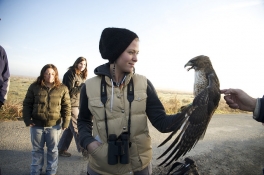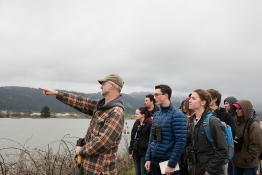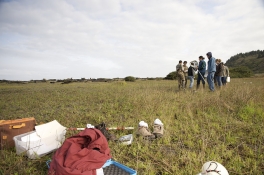Bird Collision Study at Cal Poly Humboldt
In fall 2023, the "Wildlife Techniques" class (WLDF 311) is conducting a study of bird collisions on the Cal Poly Humboldt Campus. It is estimated that nearly a billion birds die every year in North America from collisions with buildings and windows, representing the 2nd largest cause of human-related mortality for wild birds. This video provides a good overview of this important topic.
Previous work conducted at 40 North American universities suggests that building size, number of windows, and regional urbanization all affect the number of bird collisions with campus buildings (Hager et al. 2017). However, very little of that work was done at Western universities. More recently, studies done at the Cal Academy in Golden Gate Park in San Francisco, UC Santa Cruz, and at the Univ of British Columbia in Vancouver all suggest that while the rates of bird collisions may be lower in parts of the West than along major flyways of the East Coast and Midwestern United States, buildings near the Pacific coast can still pose a hazard for migrating songbirds, especially during fall migration.
Humboldt County is along an important migratory pathway for millions of migrating songbirds, most of which fly at night using the stars as navigational guides. Inclement weather can throw them off-course and prompt them to seek shelter in unfamiliar territory, increasing their vulnerability to collisions with buildings.
This study will provide a brief first look at this issue, with students investigating the perimeters of buildings in September and October for bird carcasses. If you see a dead bird on campus, please leave it where you found it, and use this link to provide us with specifics. A member of our team will come retrieve the bird for further study.








